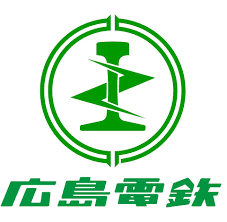Learning Studios
Attractions
Cities in Chugoku
Hiroshima
One of the major cities of Japan, Hiroshima has undergone a transformation through rebuilding after the war and is now a vibrant modern city the residents are justifiably proud of. There is a lot to do and see in the city, with baseball for sports fans (Hiroshima Carp), several notable art museums, and a busy nightlife. The city is a regional business and manufacturing hub, with for example the headquarters of Car Manufacturer Mazda nearby. More compact than Tokyo or Osaka, but still offering the bustle of a city, Hiroshima is a good choice for those looking for big city life at a slightly slower pace.
Ookayama
Despite having a population of over 700,000, Okayama city flies under the radar for most visitors to Japan. Home to the legend of Momotaro, Ookayama is a hub within Chugoku second only to its larger neighbor Hiroshima, and has plenty to offer visitors and residents alike. Sights include Okayama castle famous for it’s unusual black color, and Korakuen Garden which was constructed in around the year 1700. Okayama also boasts its own distinct dialect of Japanese, to further challenge learners of the language.
Kurashiki
Kurashiki is one of Japan’s historic merchant towns. Situated along a picturesque canal at the base of Mt. Tsurugata, Kurashiki’s white-walled storehouses were developed during the Edo and Meiji period and are beautifully preserved. Kurashiki is just 30 minutes west of Okayama City and its charming merchant district forms part of the Bikan Historical Quarter. Known as the Venice of Japan thanks to its wonderful waterways, the city stretches out to a bustling industrial port and is known as the birthplace of denim in Japan. It’s wealthy merchant heritage also means that the city is home to a renowned art museum featuring pieces by Monet and Matisse.
Shimonoseki
Nestled in the far west of Japan’s main island of Honshu, Shimonoseki is the largest city in Yamaguchi prefecture. Historically one of Japan’s few foreign-trading outposts, Shimonseki boasts an important port, the famous Kanmon Bridge, and is also home to a former British Consulate. Although rich in historical culture, modern Shimonoseki is best known as the home of the potential lethal fugu (blowfish). This iconic dish is a highlight of The Karato Market, the largest fish market in the Chugoku region. The region is also known for distributing 80 percent of all the fugu sold in Japan.
Getting Around Chugoku
Smart Cards and Commuter Passes
Hiroshima has its own smart card system. A single card can be used for trains, trams, buses, and even convenience stores. You can purchase a card at a ticket machine at any train station. Likewise, you can recharge the card at any point. For frequent trips between two stops like home and the Learning Studio, the card can be upgraded to serve as your commuter pass.
* Not all public transportation will accept the smart card. It is always best to carry some change in case the smart card is not accepted.
 Learning Studio
Learning Studio
 Attraction
Attraction


-300x191.jpg)
